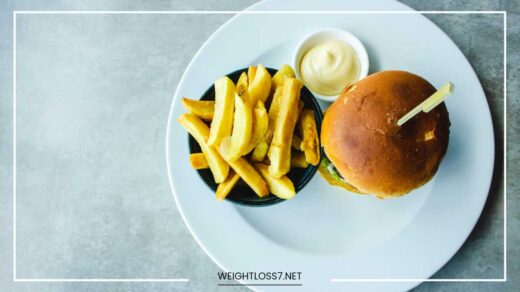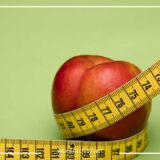Easiest Way to Lose Weight

Easiest Way to Lose Weight
The Effortless Path to a Healthier You: Unveiling the Easiest Way to Lose Weight
Losing weight is often portrayed as a grueling battle — one that demands extreme willpower, endless hours at the gym, and rigid diets that leave you feeling deprived and frustrated. The journey can feel confusing, overwhelming, and at times, discouraging.
But what if there was a better way? What if weight loss didn’t have to mean suffering or self-denial? What if the easiest way to lose weight was also the most sustainable?
Let’s be clear: “easy” doesn’t mean instant. There’s no magic pill or one-size-fits-all shortcut. Instead, the easiest path to weight loss is one built on realistic, small steps that naturally fit into your daily life. It’s about creating positive habits that are easy to maintain—not punishing yourself or overhauling your entire routine overnight.
This gentle approach to weight loss prioritizes progress over perfection. It shifts the focus from restriction to nourishment, from punishment to self-care. You don’t need to starve yourself or sweat through high-intensity workouts you dread.
Instead, you make mindful food choices, add enjoyable forms of movement, and foster a balanced mindset. These small yet powerful shifts help you build momentum, boost confidence, and—most importantly—support long-term change.
In this article, we’ll explore how to make weight loss feel less like a burden and more like a natural extension of a healthy lifestyle. You’ll discover how to:
- Embrace simple, satisfying meals that keep you full and energized.
- Incorporate movement into your day in ways that feel good, not grueling.
- Practice mindfulness to better understand your body’s needs and cues.
Forget the quick fixes and extreme programs. This is about finding a rhythm that aligns with your life—a path that supports not just a slimmer body, but a stronger, happier, and more energized you. The easiest way to lose weight? It starts with kindness, consistency, and a commitment to caring for yourself.
Understanding the Foundation: Small Changes, Big Impact
At the heart of the easiest and most sustainable approach to weight loss lies one powerful truth: small, consistent changes can lead to big, lasting results.
Far too often, people dive headfirst into drastic diets or intense workout regimens, only to feel overwhelmed, burnt out, and discouraged when they can’t maintain them.
But what if lasting change doesn’t require an all-or-nothing mindset? What if the key is simplicity, patience, and consistency?
Rather than attempting to completely overhaul your lifestyle overnight, this approach encourages you to identify small, manageable shifts that you can confidently integrate into your daily routine.
These may seem minor at first—swapping soda for water, taking a short walk after dinner, eating mindfully instead of rushing through meals—but when practiced regularly, they build powerful momentum.
Think of it like a snowball rolling downhill: each small action adds to your progress, gradually building speed and size until the results are impossible to ignore.
Over time, these tiny habits compound, transforming not just your body, but your mindset and lifestyle as well.
The beauty of this method lies in its sustainability. Because the changes are realistic and aligned with your current routine, they’re far more likely to stick. This sense of progress—even if it’s slow—can boost confidence, motivation, and a genuine sense of control over your journey.
In the end, it’s not about doing everything perfectly. It’s about doing a few small things consistently—and trusting that those small wins will lead to big changes.
The Gentle Art of Dietary Adjustments: Nourishing Your Body, Not Depriving It
When it comes to weight loss, dietary changes often take center stage—and for good reason. What we eat has a profound impact on our health, energy levels, and ability to maintain a healthy weight.
But here’s where many people get it wrong: they approach food with a mindset of restriction and punishment.
The “easiest” path to weight loss flips this narrative. Rather than obsessing over what you can’t have, it focuses on nourishing your body and creating a healthy, enjoyable relationship with food.
This approach is rooted in the idea that small, sustainable adjustments—ones you can stick with for life—are far more effective than extreme diets that leave you feeling deprived.
By making gentle, mindful changes, you support your body’s natural rhythms and build habits that fuel long-term success. Let’s explore the key dietary principles that form the foundation of this approach:
1. Prioritize Whole, Unprocessed Foods
One of the simplest and most impactful changes you can make is to center your meals around whole, minimally processed foods.
These include fruits, vegetables, whole grains, lean proteins, legumes, nuts, and seeds. Unlike processed foods, which are often high in calories, sugars, and unhealthy fats, whole foods are packed with the nutrients your body craves.
Try gradually incorporating more of these into your meals. Add an extra serving of vegetables to lunch and dinner, swap white rice for brown rice or quinoa, or replace processed meats with grilled fish or chicken.
These swaps not only support weight loss but also help stabilize blood sugar levels, improve digestion, and boost your energy.
2. Embrace Mindful Eating
So much of our eating is done on autopilot—grabbing snacks while working, eating in front of the TV, or finishing a meal without truly tasting it.
Mindful eating brings awareness back to the table. It’s about slowing down, paying attention to your hunger and fullness cues, and truly savoring your food.
Start by taking a few deep breaths before a meal to center yourself. Eat slowly, chew thoroughly, and put your fork down between bites. Avoid distractions like phones or screens.
By being more present during meals, you’re more likely to recognize when you’re full and less likely to overeat.
Also, check in with yourself before reaching for food: are you truly hungry, or are you bored, stressed, or simply eating out of habit? Tuning into your body’s signals can dramatically reduce mindless snacking and emotional eating.
3. Hydrate Strategically
Water is a silent ally in your weight loss journey. It supports digestion, helps flush out toxins, and can even aid in appetite regulation. Sometimes, what feels like hunger is actually mild dehydration.
Aim to drink water consistently throughout the day, starting with a glass in the morning. Drinking a glass 15–30 minutes before meals can also help you feel more satisfied and prevent overeating.
If plain water isn’t your thing, try infusing it with slices of fruit, cucumber, or fresh herbs like mint for a refreshing twist. Unsweetened herbal teas are also a great way to stay hydrated without added sugar or calories.
4. Gently Control Portion Sizes
You don’t need to weigh every morsel or track every calorie to manage portion sizes effectively. A more relaxed approach can work just as well.
Using smaller plates or bowls can naturally help with portion control, as can serving meals directly onto plates rather than eating straight from a container.
Listen to your body’s cues as you eat. Aim to stop when you’re comfortably full, not stuffed. It’s perfectly okay to leave food on your plate or save leftovers for later.
If you’re dining out, consider splitting a dish with a friend or boxing up half for another meal. These subtle shifts help prevent overeating without making you feel restricted.
5. Reduce Sugary Drinks and Ultra-Processed Foods
Sugary drinks and heavily processed foods are major culprits in weight gain—not just because they’re high in calories, but because they tend to spike blood sugar and leave you feeling hungry shortly after.
Gradually cutting back on soda, sweetened coffee drinks, candy, chips, and fast food can make a noticeable difference in how you feel and how your body functions.
Rather than cutting these out cold turkey, try swapping them with healthier alternatives. Replace sugary sodas with sparkling water, enjoy fruit instead of candy, or prepare simple, wholesome snacks at home like yogurt with berries or a handful of nuts. These swaps are gentler on your body and far more satisfying in the long run.
6. Allow for Flexibility and Treats
Deprivation almost always backfires. When you tell yourself certain foods are “off-limits,” they become even more tempting—and eventually, this can lead to bingeing or giving up entirely. The key to a sustainable diet is flexibility.
Yes, prioritize nourishing foods most of the time—but leave room for the occasional treat. Enjoy your favorite dessert on a special occasion, have pizza night with friends, or indulge in a small piece of chocolate when you’re craving it.
By giving yourself permission to enjoy food without guilt, you build a much healthier and more balanced relationship with eating.
The Joyful Introduction of Movement: Finding Activities You Love
Exercise is an essential pillar of a healthy lifestyle and a powerful ally on your weight loss journey. But here’s the good news: it doesn’t have to be intense, intimidating, or time-consuming to be effective.
The “easiest” way to incorporate physical activity focuses not on rigid gym schedules or punishing workouts, but on movement that feels natural, enjoyable, and—most importantly—sustainable.
Instead of viewing exercise as a chore or obligation, think of it as a celebration of what your body can do. When you shift your mindset from “I have to work out” to “I get to move,” something wonderful happens—exercise becomes something you look forward to, not something you dread.
Here are some approachable, joyful ways to welcome more movement into your daily life:
1. Walk More, Stress Less
Walking is one of the most accessible and underrated forms of exercise. It’s gentle on the joints, free, and doesn’t require a gym membership or fancy gear.
Whether you’re strolling around your neighborhood, taking the dog for a walk, or heading out for a nature hike, walking is a simple way to get your heart rate up and clear your mind.
Try setting a goal to walk for at least 30 minutes most days of the week—or break it up into smaller chunks throughout your day.
2. Choose Activities That Make You Smile
The best type of exercise is the one you actually enjoy. Forget the pressure to do what everyone else is doing.
If high-intensity workouts aren’t your thing, that’s okay! Try dancing in your living room, taking a swim, cycling through a local park, hiking a scenic trail, doing yoga at home, or even playing with your kids or pets. Experiment until you find a few activities that make you feel good—physically and emotionally.
3. Move Naturally Throughout the Day
Exercise doesn’t always have to be structured. Movement can be woven seamlessly into your routine. Stand up and stretch every hour if you sit at a desk. Take the stairs instead of the elevator. Park farther away from entrances.
Do a few squats or stretches while watching TV or cooking dinner. Even everyday tasks like gardening, vacuuming, or dancing while cleaning can count as physical activity. It all adds up!
4. Start Slow and Stay Consistent
If you’re just starting out, it’s important to be gentle with yourself. Begin with short, manageable sessions and gradually increase as your stamina builds. There’s no rush—the goal is to create a habit that sticks.
Don’t worry about how much you’re doing at first. What matters most is showing up consistently and being kind to yourself along the way.
5. Embrace Mini Workouts
Don’t have a full hour to dedicate to exercise? That’s perfectly okay. Short bursts of movement spread throughout the day can be just as effective.
Try a 10-minute brisk walk in the morning, a quick yoga flow on your lunch break, or a few stretches before bed. These “mini workouts” are easier to fit into a busy schedule and help keep your energy levels up.
The Power of Mindset and Lifestyle: Nurturing Your Well-Being
While nutrition and physical activity are vital components of weight loss, your mindset and overall lifestyle are just as important—if not more so.
The “easiest” and most sustainable path to a healthier you doesn’t just focus on what you eat or how much you move.
It also involves creating a balanced, nurturing lifestyle that supports your mental, emotional, and physical well-being.
True transformation happens when healthy habits become part of your identity—not just something you do temporarily. Here are key lifestyle shifts that can make a lasting difference:
Prioritize Quality Sleep
Sleep isn’t a luxury—it’s a necessity. Getting 7–9 hours of restful sleep each night helps regulate hormones related to hunger, cravings, and metabolism.
Poor sleep can lead to increased appetite and reduced willpower, making healthy choices more difficult.
Create a calming nighttime routine, limit screen time before bed, and aim to go to sleep and wake up at consistent times.
Manage Stress with Intention
Chronic stress can wreak havoc on your health and derail your weight loss efforts by increasing cortisol levels, which can promote fat storage and emotional eating.
Find stress-relieving practices that work for you—whether it’s deep breathing, meditation, journaling, gentle movement, spending time outdoors, or connecting with people who uplift you.
Create a Supportive Environment
Your surroundings matter. Surround yourself with people who encourage your growth, not those who sabotage it.
Join a group, find an accountability partner, or simply let loved ones know how they can support you. A positive environment helps reinforce your goals and makes the journey more enjoyable.
Practice Self-Compassion
Weight loss isn’t linear. There will be plateaus, setbacks, and tough days. Be kind to yourself. Replace negative self-talk with encouragement, and treat yourself the way you’d treat a friend. Every step forward counts, and progress is more powerful than perfection.
Set Realistic, Achievable Goals
Avoid the trap of chasing quick fixes. Instead, aim for steady, realistic progress—like walking three times a week or cooking more meals at home. These small victories build confidence and momentum, helping you stay committed for the long haul.
Putting It All Together: A Sustainable Path to a Healthier You
The “easiest” way to lose weight isn’t about shortcuts, crash diets, or pushing yourself to extremes. It’s about creating a lifestyle that feels good, supports your well-being, and is realistic for the long haul.
Instead of focusing solely on the number on the scale, this approach encourages a more holistic mindset—one that prioritizes balance, self-care, and steady progress.
By embracing small, consistent changes in your daily routine—like nourishing your body with wholesome foods, adding joyful movement into your day, and fostering a positive, compassionate mindset—you begin to build a foundation that supports not just weight loss, but overall health and happiness.
The beauty of this path lies in its flexibility. You don’t have to be perfect to make progress. Life will have ups and downs, and that’s okay.
What matters most is that you keep showing up for yourself, one choice at a time. Whether it’s choosing a nourishing meal, going for a short walk, or taking a moment to breathe and reset, these small actions add up.
Be patient with yourself. Sustainable change takes time, and every step forward—no matter how small—is worth celebrating.
Progress isn’t always visible right away, but with consistency, the results will come. More importantly, you’ll feel stronger, more energized, and more connected to your body along the way.
This journey isn’t just about losing weight—it’s about gaining confidence, balance, and a healthier relationship with food, movement, and yourself. It’s about building habits you can live with, and even enjoy, for years to come.
Remember: this is a marathon, not a sprint. The “easiest” way ensures you have the energy, mindset, and joy to not just reach your goals, but maintain them—while feeling empowered every step of the way.

















